(Euphorbia esula)
Description: Leafy spurge is a perennial, reproducing by extensive underground rhizomes and seed. The roots are deep and wide spreading, woody, and persistent. The creeping rhizomes give rise to roots and shoots every few inches from pink buds. The stems are erect, smooth and branched at the top. The plants are one to two feet high and contain a milky juice-like substance. The linear leaves are alternate and appear scattered except the whorl of lanceolate oblanceolate bract-like leaves at the base of the umbel. The lower strap-like leaves on the stem are usually drooping. The greenish-yellow heart-shaped bracts that support the flower are arranged in a nearly flat-topped umbel. The flowers are small with the greenish-yellow petals fused into a cup-like structure above the bracts. The plant flowers May to July and seeds July to September. The seeds are on a short stalk from the cup-like base with three lobes with three seeds. The seeds are ovoid, smooth, light gray to brownish, with a dark line on one side and a yellowish appendage at the point of attachment.
Distribution: Leafy spurge was introduced into the United States in the early 1800’s, and has since spread over much of the Northern part of the country. The most extensive infestations are in Nebraska, S. Dakota, N. Dakota, Wyoming, and Montana. Currently this weed is found only in Western Iowa, and has not yet reached Johnson County. Leafy Spurge is found on roadsides, waste areas, pastures, meadows, and cultivated fields. This weed spreads rapidly by seed and has very persistent roots and rhizomes.
What’s the problem?: Leafy spurge displaces native vegetation in prairie habitats and fields through shading and by using available water and nutrients, and also by release of plant toxins that prevent the growth of other plants underneath it. The complex root system can reach 15 feet into the ground, and the seeds can remain viable in the soil up to 7 years. Once present, leafy spurge is so aggressive that it can completely take over new areas. Leafy spurge also regenerates entire plants from small fragments of root.
Management methods: Because of its persistent nature and ability to regenerate from small pieces of root, leafy spurge is extremely difficult to eradicate. Many Northern plain states consider this weed a major economic and agricultural pest. Biological control shows promise for future control of this weed. Systemic herbicides may help control infestation, if applied when the flower and seeds are developing, or in the fall as the plant is moving nutrients down to the root system. Research shows that chemical treatment in the fall followed by a spring prescribed burn may help to reduce leafy spurge populations. Multiple treatments are necessary every year for several years making leafy spurge control extremely expensive. If left uncontrolled for a single year, leafy spurge can reinfest quickly. Once populations are reduced, use of competitive seeding may help to prevent future reinfestations.

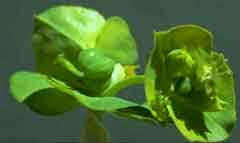
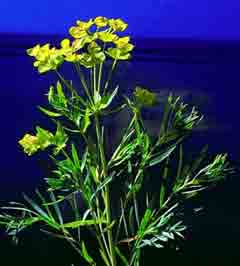
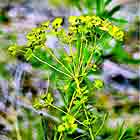

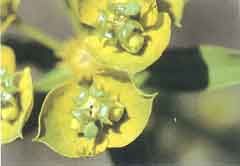
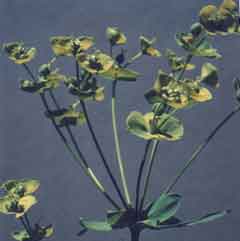
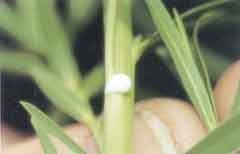
Photos courtesy of King County, WA Noxious Weed Control Program, Washington State Noxious Weed Control Board and Weeds of Nebraska and the Great Plains published by Nebraska Department of Agriculture
